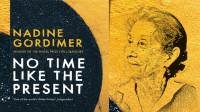Speaking to the Times of India, Kamila Shamsie said that it was not easy to compare the writings of the various writers of Pakistan in terms of style or form, ‘except we’re writing about Pakistan.’ She also said that many of Pakistan’s English-language novelists are looking at history or politics in their work.
Three of Shamsie’s previous books were political. Clearly, Shamsie has a good grasp of history and a knack of weaving it into a story.
Kartography, her third novel was about Karachi and the recent history of Pakistan. Her fifth book Burnt Shadows was shortlisted for the Orange Prize for Fiction and it went from Nagasaki to Delhi to Karachi and back to New York ‘binding elements of history and humanity that are both distant and seemingly unrelated.’ (Huffington Post).
A God in Every Stone, Shamsie’s sixth book is set in the pre-partition sub-continent, in the region that is now in North West of Pakistan, and about its ancient roots. It speaks of empire and the meaning of friendship, love and loss set in Peshawar, near the ancient Casatyrus, where every stone tells a tale.
Viv Spencer, a young Englishwoman, peers out of the window of her train while travelling to Peshawar in the year 1915 and spots a dolphin leaping in and out of the water along the borders of the Indus and Kabul rivers which run parallel to each other in a single body of water.
She muses that the dolphin is like a needle stitching the two rivers together. It is a superb piece of imagery.
Change the water to the passage of time for the theme of this novel, and, like Burnt Shadows, it stitches the past and the present of this region together with the story of Scylax.
Scylax, a Greek explorer and writer, lived around the 5th or 6th century BC. He was sent by the Persian King Darius to follow the course of the Indus in an attempt to discover where it led. Scylax returned almost three years later to report his findings to Darius. What is not fact is that Darius presented Scylax with a silver circlet to mark his honour, a circlet that disappeared in 334 BC, was found and lost again rather like the dolphin that disappears beneath the waves to re-emerge again and again.
The story weaves through Alexander and the British colonial years to resurface in the 20th century via the First World War. In fact it spills out of the novel and into the present given the immutability of history, thumbing its nose at its manipulation and the destruction of historical artefacts, the stupas, statues of the Buddha, and of the historic site at Shahji ki Dheri now a slum near Peshawar.
Viv had been working at an excavation site in Peshawar. However, when the World War I starts, returns to England to work as a VAD in London. But she soon returns to India, fleetingly meeting a young Pashtun by the name of Qayyum, who is also returning to Peshawar.
Like the dolphin Qayyum stitches together the past and the present. He has served in the British army just as Scylax has served Darius who, like the British after him, went on to conquer India. Numerous Indians were injured and killed in the War against the enemies of the Allies in the First World War. Qayyum himself lost an eye in Ypres before returning home, just as Scylax returned home after charting the Indus.
Scylax, for all his service of Darius, was not on the side of his emperor when his people, the Carians, rebelled against Darius and the Persians, Scylax sided with the Carians. And Qayyum? He joined the Khudai Khidmatgar Ghaffar Khan’s non-violent Red Shirt movement against British rule realising, ‘if a man is to die defending a field, let the field be his field, the land his land, the people his people.’ Ironically, this inspiration comes when he met Viv Spencer, once again.
Shamsie has explored a new style of writing in this book, one that was also used by James Joyce in 'Ulysses' and by several others, more recently by Frank McCourt in 'Teacher Man'... she has dispensed with quotation marks which is something not everyone will appreciate. I’m not sure I did myself because it made it harder to review the book. Checking to see who said what felt uncannily like searching for the circlet at times.
Surprisingly it turns out that quotation marks were only first used in the 16th century, so perhaps this is all part of Shamsie’s scheme of turning history around and bringing it into the present which for readers today might be rather unsettling, if appropriately evocative.
The writer is a journalist based in Lahore. She tweets @RabiaAhmed4 and blogs at rabia-ahmed.blogspot.com






















